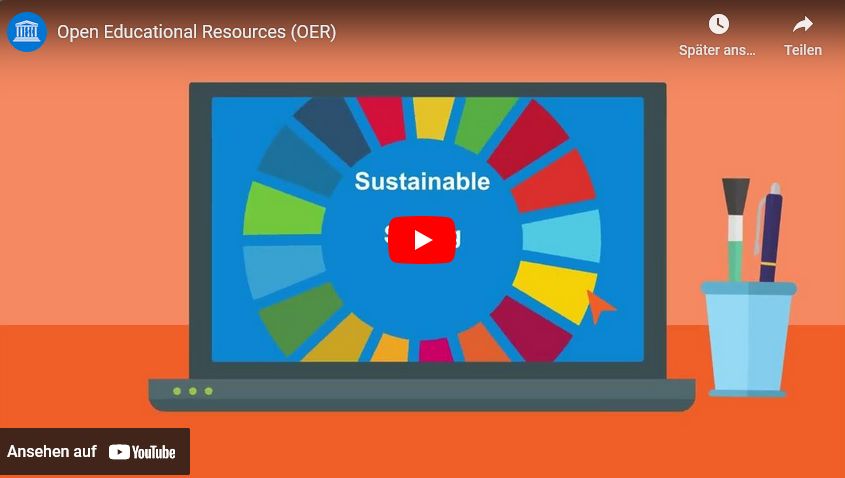Open Educational Resources: Introduction
If you create learning and teaching material, you need information about copyright and licenses. Open Educational Resources (OER) are educational materials of any kind and in any medium that are published under an open license.
Such an open or free license allows free access as well as free use, editing, and redistribution by others with little or no restrictions. OER can include individual materials but also complete courses or books. Any medium can be used. Curricula, course materials, textbooks, streaming videos, multimedia applications, podcasts - all these resources are OER if they are published under an open license.
 Open Educational Resources (OER) by UNESCO via YouTube according to the licence Creative Commons - Attribution-ShareAlike (CC BY-SA)
Open Educational Resources (OER) by UNESCO via YouTube according to the licence Creative Commons - Attribution-ShareAlike (CC BY-SA)
What added value does OER offer?
With OER, educational materials can be used, edited, supplemented or created. Different platforms around the world offer OER and many search engines allow a targeted license search. OER are not only profitable for teachers, but also for learners. OER offers several advantages:
- OER is available to everyone worldwide
- Through digitization and networking, material can be widely distributed and shared
- OER enables a new kind of collaboration
- Equal opportunities in education
- Time saved in the exchange and reuse of teaching/learning materials
- Educational materials can be created, updated, edited and perfected together
Instructions for creating teaching-learning materials
Create own OER materials
When creating teaching and learning materials, these can be entirely self-generated, meaning no existing materials are used. However, it is also possible to incorporate existing materials, such as graphics or textual content, during the creation process. Guidance on what to consider when creating OER materials can be found in the guide: How-to guide: Creating OER.
Utilize existing OER
If existing OER material is used to create teaching and learning material, care must be taken when using it to ensure that it is licensed. How-to guide: Using OER describes what else to look out for when using OER material and where to find OER materials.
Further information and good practice examples on OER
On Open Educational Resources (OER) toolkit | Una Europa you can find extensive information. In addition to information, practical tips and references to good practice examples can be found here. In order to make the individual aspects around the topic of OER as clearly accessible as possible, the topics can be found via the navigation according to chapters on the educational areas as follows:
- Overview
- OER Showcase
- OER Benefits
- Using OERs: How-To-Guide
- Creating OERs: How-To-Guide
- Guidance
— Note: This guide was created in collaboration with the Project ValiDE. The materials were developed by ValiDE and transferred to the ZenDi Wiki by TEgoDi.